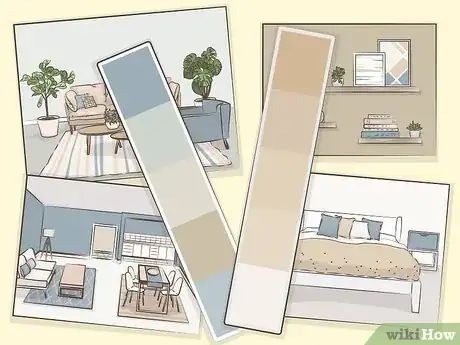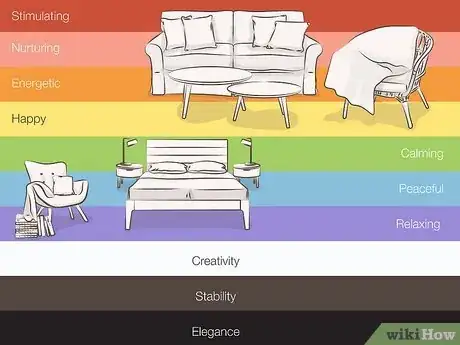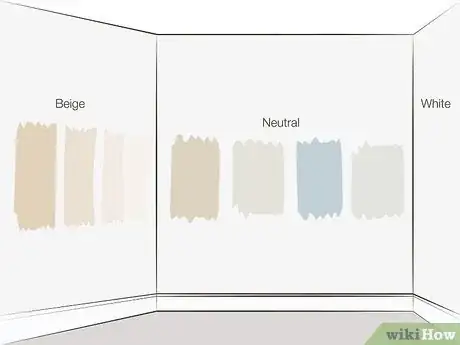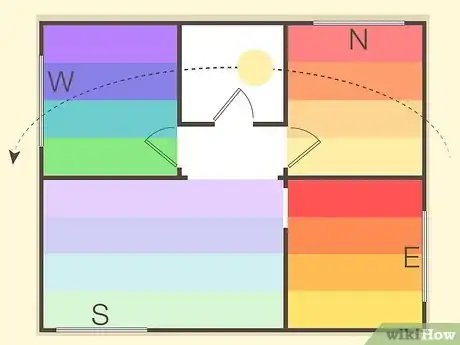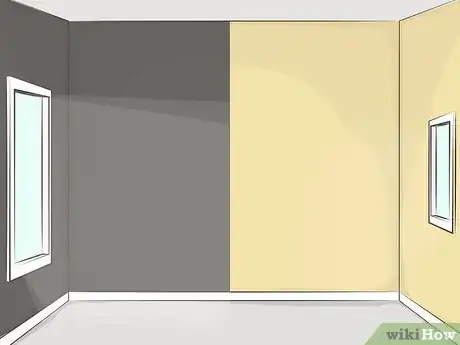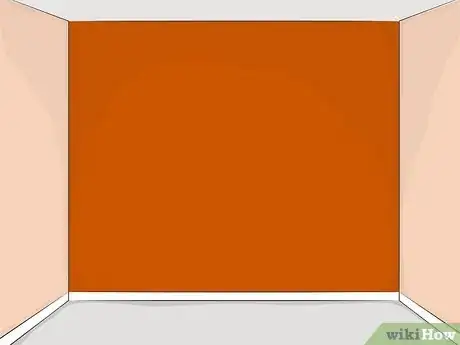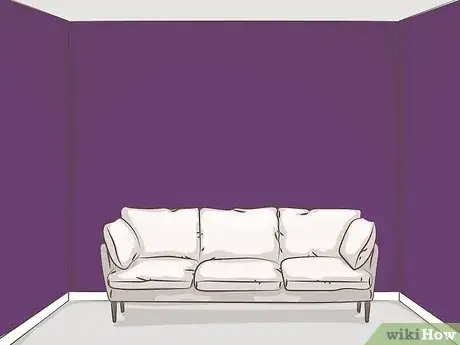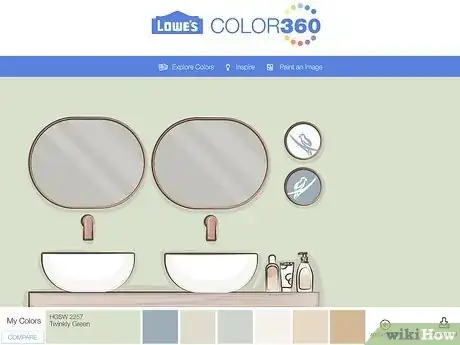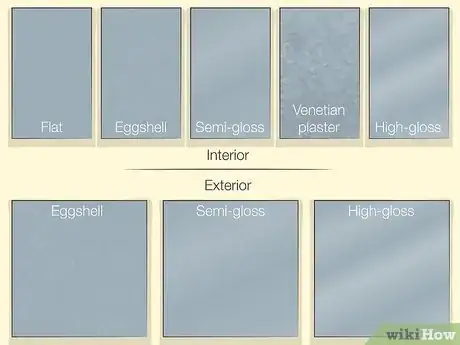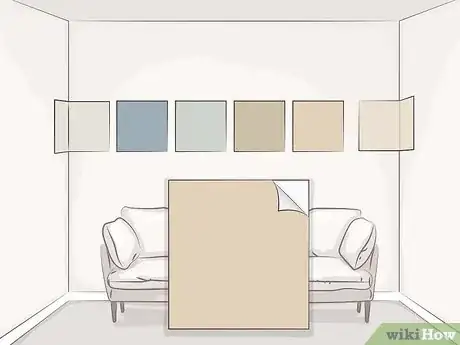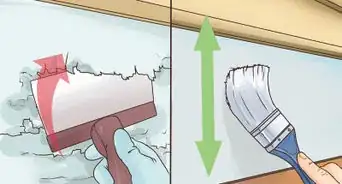This article was co-authored by Juli Roland and by wikiHow staff writer, Janice Tieperman. Juli Roland is a Color Specialist and the Founder of PaintColorHelp.com, one of the first companies in Dallas, Texas metro area that provides in-home color consultations and helps clients create paint color schemes. Juli has over 15 years of commercial and residential color consulting experience, including seven years as a custom-matcher in the paint industry. She earned her certification in color strategy from Camp Chroma and is a member of the Inter-Society Color Council. She has a BA in Advertising from Texas Tech University.
There are 16 references cited in this article, which can be found at the bottom of the page.
This article has been viewed 49,374 times.
Picking new paint colors is one of the most exciting parts of upgrading your home. But with all the different options out there, how are you supposed to pick the best color for your interior and exterior needs? No worries—we’ll teach you everything you need to know about paint selection, so you can choose the best colors for your home. Read on for plenty of time-saving tips, tricks, and hacks that’ll help streamline the process!
Things You Should Know
- Use the existing furniture and fixtures in your room as inspiration for your color scheme.
- Choose colors that match the function of each room. Energetic hues are great for social spaces while soothing colors are best for private spaces.
- Pick an exterior paint that complements your home’s features and goes well with the landscaping.
- Test out different paints at home before making any final selections.
Steps
Expert Q&A
-
QuestionWhat are some colors I can use to make the entrance room of my house feel more inviting?
 Juli RolandJuli Roland is a Color Specialist and the Founder of PaintColorHelp.com, one of the first companies in Dallas, Texas metro area that provides in-home color consultations and helps clients create paint color schemes. Juli has over 15 years of commercial and residential color consulting experience, including seven years as a custom-matcher in the paint industry. She earned her certification in color strategy from Camp Chroma and is a member of the Inter-Society Color Council. She has a BA in Advertising from Texas Tech University.
Juli RolandJuli Roland is a Color Specialist and the Founder of PaintColorHelp.com, one of the first companies in Dallas, Texas metro area that provides in-home color consultations and helps clients create paint color schemes. Juli has over 15 years of commercial and residential color consulting experience, including seven years as a custom-matcher in the paint industry. She earned her certification in color strategy from Camp Chroma and is a member of the Inter-Society Color Council. She has a BA in Advertising from Texas Tech University.
Certified Color Specialist In general, colors from the “warm” side of the color wheel are more welcoming. Yellows, oranges, pinks and red. Also, near-neutrals from those same color families, which would include most of the tones people think of as gold, beige or "greige." That said, you can spark up a cool or white color scheme by using accents in warm colors or adding warm metals like gold and copper.
In general, colors from the “warm” side of the color wheel are more welcoming. Yellows, oranges, pinks and red. Also, near-neutrals from those same color families, which would include most of the tones people think of as gold, beige or "greige." That said, you can spark up a cool or white color scheme by using accents in warm colors or adding warm metals like gold and copper. -
QuestionShould I paint all my rooms the same color?
 Suzanne Lasky, ASIDSuzanne Lasky is an Interior Designer and the Founder of S Interior Design, a design consulting company based in Scottsdale, Arizona specializing in new home builds, home remodels, and all related design options for residential and small business clients. Suzanne has over 19 years of interior design and consulting experience. She is an Allied Member of the ASID (American Society of Interior Designers). She earned a Master of Business Administration (MBA) from Indiana University and an AAS in Interior Design from Scottsdale Community College.
Suzanne Lasky, ASIDSuzanne Lasky is an Interior Designer and the Founder of S Interior Design, a design consulting company based in Scottsdale, Arizona specializing in new home builds, home remodels, and all related design options for residential and small business clients. Suzanne has over 19 years of interior design and consulting experience. She is an Allied Member of the ASID (American Society of Interior Designers). She earned a Master of Business Administration (MBA) from Indiana University and an AAS in Interior Design from Scottsdale Community College.
Interior Design Consultant You don't have to, but try to make the colors transition smoothly between rooms, especially if they share some space together.
You don't have to, but try to make the colors transition smoothly between rooms, especially if they share some space together. -
QuestionWhat color should I paint my walls if I have a red leather sofa and chair and the room has good outdoor light?
 Community AnswerCream goes well with red. Put some cream accent pillows on your couch, too.
Community AnswerCream goes well with red. Put some cream accent pillows on your couch, too.
References
- ↑ https://www.bobvila.com/articles/367-how-to-select-a-paint-color/
- ↑ https://www.bobvila.com/articles/367-how-to-select-a-paint-color/
- ↑ https://www.bhgre.com/bhgrelife/how-to-choose-the-perfect-paint-color/
- ↑ https://www.apartmenttherapy.com/warm-cool-colors-1352
- ↑ https://www.colorpsychology.org/
- ↑ https://www.bobvila.com/articles/367-how-to-select-a-paint-color/
- ↑ https://www.bobvila.com/slideshow/21-clever-tricks-to-make-your-home-look-bigger-and-brighter-51852
- ↑ https://www.apartmenttherapy.com/how-to-choose-the-perfect-paint-color-look-at-the-light-207313
- ↑ https://www.thisoldhouse.com/painting/21018649/11-of-your-most-crazy-making-paint-color-questions-answered
- ↑ https://www.thisoldhouse.com/walls/21015827/how-to-choose-an-accent-wall
- ↑ https://www.insider.com/dark-walls-best-home-paint-colors-hgtv-interior-designers-2021-1
- ↑ https://www.bobvila.com/slideshow/the-do-s-and-don-ts-of-choosing-a-new-house-color-39283
- ↑ https://www.consumerreports.org/home-garden/paints/buying-guide/
- ↑ https://www.bobvila.com/slideshow/the-do-s-and-don-ts-of-choosing-a-new-house-color-39283
- ↑ https://www.bobvila.com/slideshow/the-do-s-and-don-ts-of-choosing-a-new-house-color-39283
- ↑ https://www.bobvila.com/slideshow/the-do-s-and-don-ts-of-choosing-a-new-house-color-39283
- ↑ https://www.bobvila.com/articles/paint-color-app/
- ↑ https://www.bobvila.com/articles/2253-how-to-choose-a-paint-finish/
- ↑ https://www.thisoldhouse.com/painting/21017905/all-about-exterior-paint
- ↑ https://www.consumerreports.org/home-garden/paints/buying-guide/
- ↑ https://www.bhg.com/decorating/color/basics/5-ways-to-connect-rooms-with-color/
- ↑ https://www.thisoldhouse.com/painting/21018649/11-of-your-most-crazy-making-paint-color-questions-answered
- ↑ https://www.thisoldhouse.com/painting/21018649/11-of-your-most-crazy-making-paint-color-questions-answered
- ↑ https://www.bhg.com/kitchen/small/make-a-small-kitchen-look-larger/
About This Article
To choose a paint color for an interior room, go with a cool color, like blue, purple, or pale green, if you want to create a calm atmosphere. Or, if you want to make a room cozier and more intimate, go with a warm color, like red, orange, or yellow. When you're choosing a color, take into consideration the undertones of any appliances, brickwork, carpeting, or hardwood floors in the room, and try to choose a color that will go well with them. For tips on how to choose exterior paint colors, scroll down!
